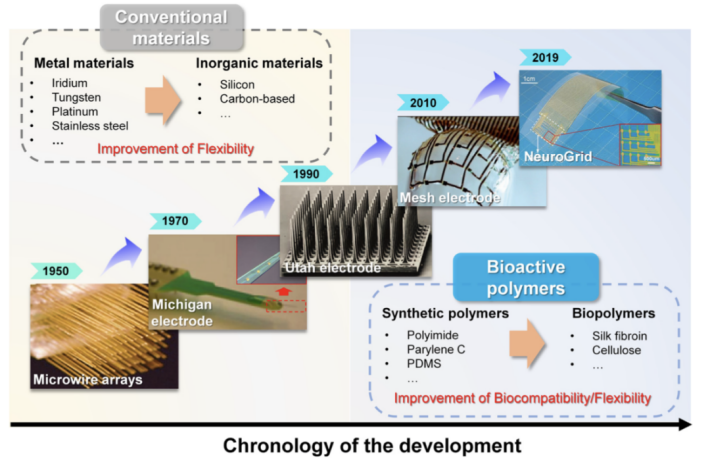With the rapid development of neural interface technology and its exploratory application to in vivo experiments in primates these years, human-computer interaction, brain function analysis, the treatment of neurological diseases including hemiplegia and Parkinson's disease, and other neuroscience applications have been advancing significantly. Bioactive polymers, due to their flexibility, softness, and processing fluency, and biocompatibility, hold great potential as a material to prepare neural interfaces like those to record cortical electroencephalogram.
To examine the current development and application prospects of this high-molecular material, Prof. Zhang Yaopeng and Assoc. Prof. Yao Xiang led their team from the State Key Laboratory for Modification of Chemical Fibers and Polymer Materials, DHU, to conduct systematic research.

From silk fibroin to neural interface based on silk fibroin
Their study, “Bioactive Polymer-Enabled Conformal Neural Interface and its Application Strategies,” was published in Materials Horizons. Hu Zhan’ao, a doctoral student, is the first author; Prof. Zhang and Assoc. Prof. Yao are the co-corresponding authors. Given the limitation of conventional electrode materials in medical applications, it is necessary to develop soft, flexible, easy-to-fabricate and biocompatible neural interfaces. Bioactive polymers thus are a desirable alternative to rigid metal. Yet there are still challenges in its application. As Prof. Zhang pointed out, “Tissues transmit bioelectric signals through ions, while metals transmit charges through electrons. Thus the conduction at the electrode-tissue interface is actually an ion-to-electron conversion process. We need to develop effective bioactive hydrogels or elastomers to facilitate ion-to-electron signal conduction.”



